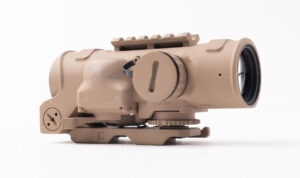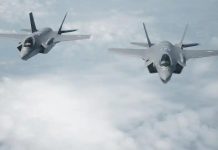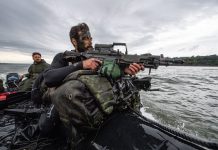Today’s NATO Alliance faces the most complex, most unpredictable security environment since the end of the Cold War. To adapt and prevail, it must close critical defence-capability gaps that range from large-scale platforms to small, man–portable solutions.
This has driven the continued evolution of ELCAN Specter optical weapon sights, which have enabled allied forces to meet operational challenges for decades.
The C79 combat optical sight was first developed in close cooperation with the Canadian Armed Forces and deployed in 1989 on the Colt C7 by the ‘C7 countries,’ most notably Canada and Denmark. The machine gun variant of this fixed 3.4x optic was then adopted as the M145 by the U.S. and Czech Armies — and remains standard issue across several NATO forces.
The next-generation ELCAN Specter DR dual role weapon sight, designed to meet asymmetric battle requirements in Afghanistan, allows soldiers to switch instantly from close-quarter combat to long-range target identification, and remains available in 1-4x and 1.5-6x magnifications.

As NATO forces are looking to modernise optical sights, ELCAN Specter sights, ITAR-free and designed and manufactured in Canada, are leveraging next-generation technologies to make soldiers even more effective and keep them safer on the battlefield.
“ELCAN sights are known for the crystal-clear optics, durability, reliable performance and extended eye relief – this is the ‘ELCAN Specter DNA’”, according to Dan Pettry, a former U.S. Army Ranger and Raytheon Intelligence & Space product manager for ELCAN Rifle Sights. “There’s an old saying, ‘necessity is the mother of invention’ – NATO capability gaps are driving innovative new solutions at ELCAN.”
As NATO forces continue to modernise, ELCAN Specter sights continue to leverage disruptive technologies to make soldiers safer and more effective.
Increasing Reliability
Raytheon ELCAN has integrated a Picatinny/STANAG rail into the sight casting, making it easier to mount ancillary devices. The integrated rail is lighter and more rugged than a mounting plate, and is available for all dual role and magnified sights with customised reticles.
Enhancing Mission Effectiveness
Approximately 12% of the world’s population is left-handed. Traditionally, standard issue equipment has been designed for right-handed soldiers and those who are left-handed or left-eye dominant had to learn to adapt. The ELCAN Specter DR 1-4x and 1.5-6x dual role weapon sights are now available with an ambidextrous throw lever to make it easier for left-handed soldiers.
“The ambidextrous lever allows both left-handed and right-handed shooters to use their non-firing hand to change field-of-view and continue engagement – it’s quicker and safer,” said Pettry.
Improving Safety
Lasers have many uses on the battlefield but can also blind a soldier, especially through a magnified optic.
External laser filters help protect users but reduce light transmission, often cause fogging and are easily lost or damaged. Raytheon ELCAN has developed an integrated high-performance laser coating that protects soldiers as effectively as an external filter without negatively impacting sight performance.








